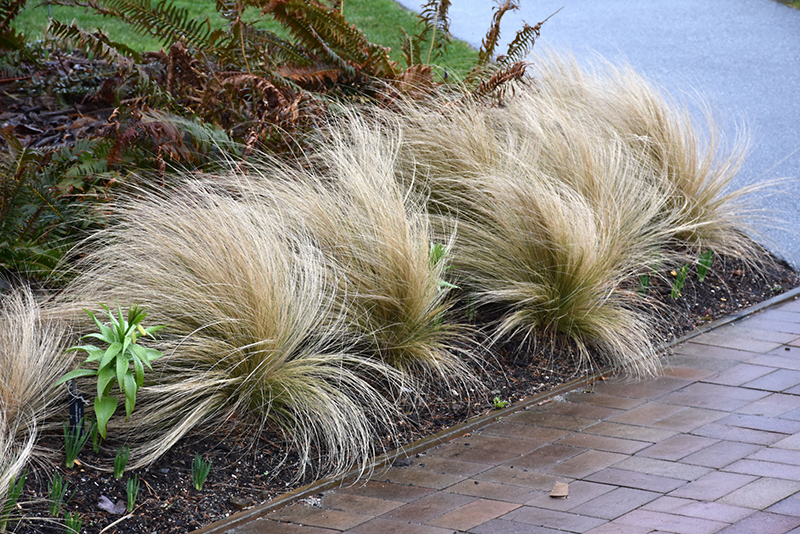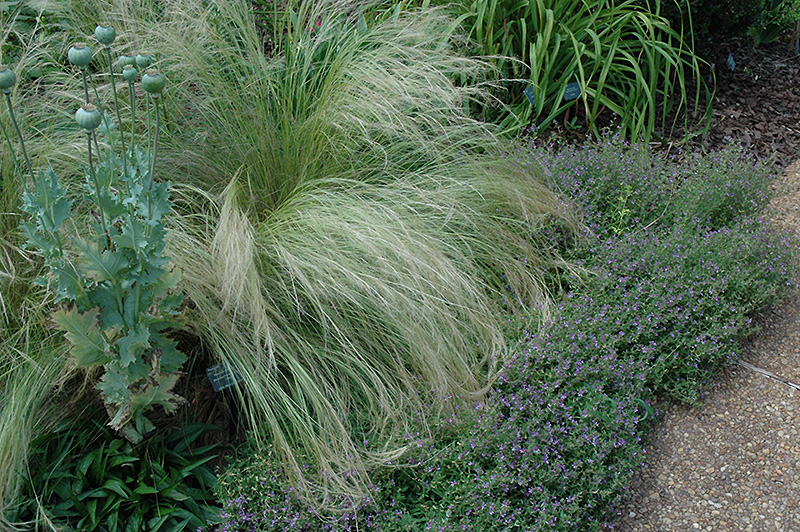Height: 30 inches
Spread: 24 inches
Sunlight:
![]()
Hardiness Zone: 6a
Other Names: Stipa tenuissima, Needle Grass
Description:
An extremely delicate looking grass that provides gentle movement and sound in even the most delicate of breezes; a textural feast in the hands of a creative garden designer
Ornamental Features
Mexican Feather Grass features airy plumes of gold flowers rising above the foliage in mid summer. Its attractive threadlike leaves are green in color. As an added bonus, the foliage turns a gorgeous harvest gold in the fall. The gold seed heads are carried on showy plumes displayed in abundance from late summer to late winter.
Landscape Attributes
Mexican Feather Grass is a dense herbaceous perennial grass with an upright spreading habit of growth. It brings an extremely fine and delicate texture to the garden composition and should be used to full effect.
This is a relatively low maintenance plant, and is best cleaned up in early spring before it resumes active growth for the season. It has no significant negative characteristics.
Mexican Feather Grass is recommended for the following landscape applications;
- Mass Planting
- Rock/Alpine Gardens
- Border Edging
- General Garden Use
Planting & Growing
Mexican Feather Grass will grow to be about 24 inches tall at maturity, with a spread of 24 inches. Its foliage tends to remain dense right to the ground, not requiring facer plants in front. It grows at a medium rate, and under ideal conditions can be expected to live for approximately 20 years. As an herbaceous perennial, this plant will usually die back to the crown each winter, and will regrow from the base each spring. Be careful not to disturb the crown in late winter when it may not be readily seen!
This plant should only be grown in full sunlight. It prefers dry to average moisture levels with very well-drained soil, and will often die in standing water. It is considered to be drought-tolerant, and thus makes an ideal choice for a low-water garden or xeriscape application. It is not particular as to soil type or pH. It is somewhat tolerant of urban pollution. This species is not originally from North America. It can be propagated by division.



